Biological Molecules
This lesson covers:
- What carbohydrates, proteins, and lipids are made of
This lesson is about 3 types of molecules: carbohydrates, proteins, and lipids. We call molecules like these 'biological molecules' and 'nutrients'. Biological molecules are molecules found in living organisms, and are produced by cells. Nutrients are substances that are needed for growth, repair, and metabolism. The aim of this lesson is to understand what each of these molecules are made of. |
Which of the following are biological molecules?
Carbohydrates
Sodium ions
Lipids
Proteins
Potassium ions
|
Carbohydrates  Carbohydrates are molecules made from atoms of carbon, hydrogen, and oxygen. (the carbohydrate in the image is glucose, you don't have to memorise it) |
 Carbohydrates come in different sizes, with the smallest carbohydrates being simple sugars, such as glucose and fructose. We call these simple sugars 'monomers'. Carbohydrate monomers can join together to form carbohydrate polymers, such as glycogen and starch. |
 In a complex carbohydrate, there are chemical bonds between the monomers. If these chemical bonds are broken, the complex carbohydrate can be broken down into simple carbohydrates (e.g. starch can be broken down into glucose molecules). |
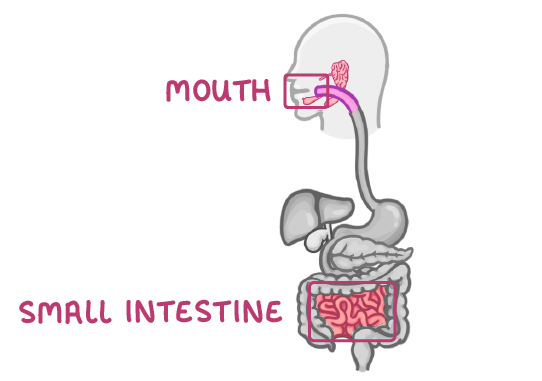 This break down of complex carbohydrates into simple carbohydrates (simple sugars) is carried out by enzymes in the mouth and small intestine. |
Which three elements are found in carbohydrates?
Oxygen
Carbon
Hydrogen
Nitrogen
Phosphorus
|
Carbohydrates are broken down in both the mouth and the small intestine.
True
False
|
Is starch a type of carbohydrate, protein or lipid?
Carbohydrate
Protein
Lipid
|
Is glucose a monomer or a polymer?
Monomer
Polymer
|
Is glycogen a monomer or a polymer?
Monomer
Polymer
|
Proteins 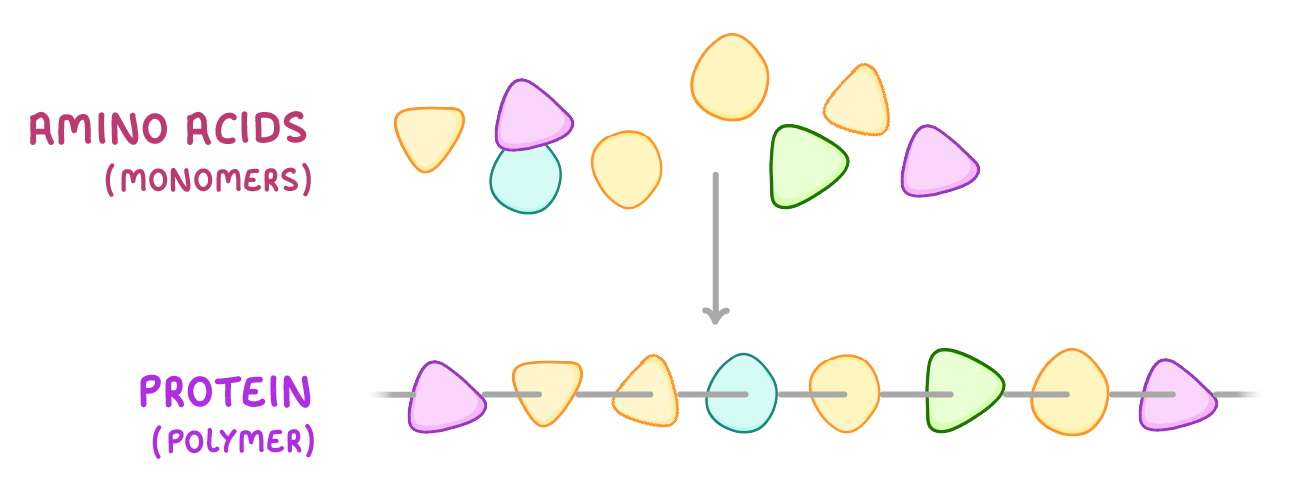 Proteins are made up of long chains of amino acids bonded together. A protein is a polymer, whilst the amino acids it is made from are the monomers. |
Amino acids are mainly made from carbon, hydrogen, oxygen, and nitrogen atoms. |
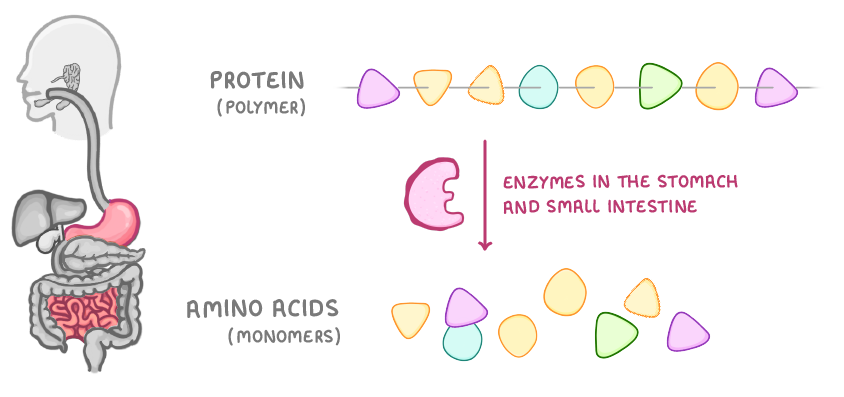 Enzymes in the stomach and small intestine break proteins down into amino acids. |
What are the monomers that join together to form proteins called?
|
Proteins are mainly made from carbon, hydrogen, oxygen, and which other element?
|
Proteins are broken down in two organs, the small intestine and the .
|
Lipids 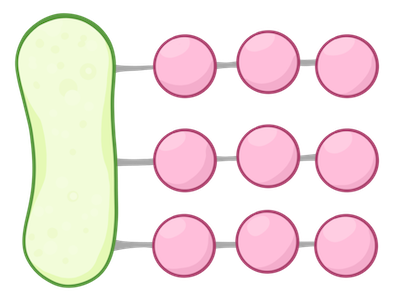 The term 'lipids' refers to both fats and oils. A fat is a lipid that's solid at room temperature, whilst an oil is a lipid that's liquid at room temperature. Lipids contain a single glycerol molecule attached to three fatty acid molecules. |
 These fatty acid molecules are often different lengths, and it's the length and structure of the fatty acid molecules that determines whether a lipid is a fat or an oil. |
 Lipids are made of carbon, hydrogen, and oxygen atoms. |
Remember that lipids are not polymers, because they aren't formed from long chains of monomers. This is a key difference between lipids (not polymers), and carbohydrates and proteins (are polymers). |
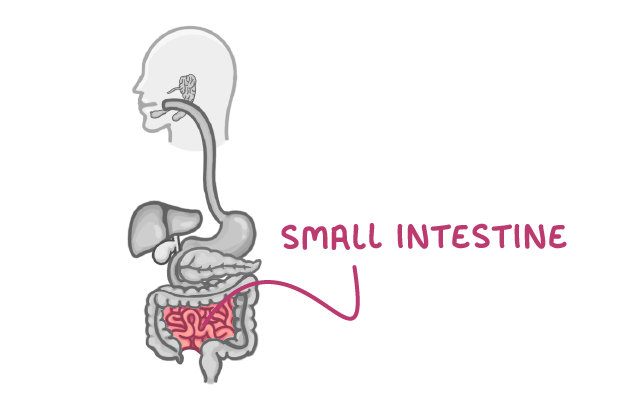 Enzymes in the small intestine are responsible for breaking lipids down inside the body. |
The term 'lipids' refers to two groups of molecules: f and o
|
Lipids are made from a single molecule and three fatty molecules.
|
Lipids are only broken down in the:
|